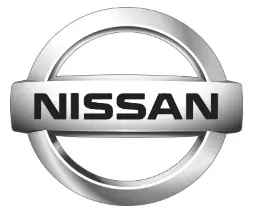Nissan Versa Sedan 2021
The Nissan Versa Sedan is a subcompact car that provides affordability, efficiency, and practicality. The 2021 Nissan Versa Sedan was introduced as the latest model in this lineup, offering updates and improvements over its predecessor. Here’s an overview of the Versa Sedan for the 2021 model year:
Exterior: The 2021 Versa Sedan features a modern and sleek exterior design. It boasts a streamlined profile with stylish lines and contemporary accents. The sedan body style provides ample space for passengers and a sizable trunk for cargo.
Powertrain: The 2021 Versa Sedan typically comes equipped with a 1.6-liter four-cylinder engine, delivering around 122 horsepower. This engine is paired with a five-speed manual transmission or an available continuously variable transmission (CVT). The CVT option optimizes fuel efficiency and provides smooth and responsive performance.
Interior: Inside the cabin, the 2021 Versa Sedan offers a comfortable and functional space for occupants. The interior design emphasizes convenience and connectivity, with available features such as a touchscreen infotainment system, Bluetooth connectivity, USB ports, and available driver-assistance technologies. Depending on the trim level and options chosen, the Versa Sedan may offer amenities like automatic climate control, keyless entry, and smartphone integration.
Safety and Technology: The 2021 Versa Sedan often comes equipped with a range of safety features and driver-assistance technologies. These may include forward collision warning, automatic emergency braking, lane departure warning, rearview cameras, and rear cross-traffic alert. The availability of these features may vary depending on the trim level and options selected.
Fuel Efficiency: The 2021 Versa Sedan is designed to be fuel-efficient, providing excellent mileage for everyday driving. The exact fuel efficiency ratings may vary depending on the specific trim level, transmission, and driving conditions.
The 2021 Nissan Versa Sedan offers affordability, efficiency, and a range of features for practical everyday use. To obtain more specific information about the features, specifications, and available options of the 2021 Versa Sedan, I recommend visiting the official Nissan website or contacting a local Nissan dealership. They will have the most up-to-date and accurate details about the vehicle.
WHEELS AND TIRES
If you have a flat tire, see “Flat tire” (P. 6-3).
TIRE PRESSURE
Tire Pressure Monitoring System (TPMS)
This vehicle is equipped with the Tire Pressure Monitoring System (TPMS). It monitors tire pressure of all tires except the spare. When the low tire pressure warning light is lit and the “Tire Pressure Low – Add Air” warning appears in the vehicle information display, one or more of your tires is significantly under-inflated.
The TPMS will activate only when the vehicle is driven at speeds above 16 mph (25 km/h). Also, this system may not detect a sudden drop in tire pressure (for example a flat tire while driving).
For additional information, see “Low tire pressure warning light” (P. 2-17), “Tire Pressure Monitoring System (TPMS)” (P. 5-5), and “Flat tire” (P. 6-3).
Tire inflation pressure
Check the tire pressures (including the spare) often and always prior to long-distance trips. The recommended tire pressure specifications are shown on the F.M.V.S.S./C.M.V.S.S. certification label or the Tire and Loading Information label under the “Cold Tire Pressure” heading. The Tire and Loading Information label is affixed to the driver-side center pillar. Tire pressures should be checked regularly because:
- Most tires naturally lose air over time.
- Tires can lose air suddenly when driven over potholes or other objects or if the vehicle strikes a curb while parking. The tire pressures should be checked when the tires are cold. The tires are considered COLD after the vehicle has been parked for 3 or more hours, or driven less than 1 mile (1.6 km) at moderate speeds.
The TPMS with Easy-Fill Tire Alert provides visual and audible signals outside the vehicle for inflating tires to the recommended COLD tire pressure. For additional information, see “TPMS with Easy-Fill Tire Alert” (P. 5-8).
Incorrect tire pressure, including under inflation, may adversely affect tire life and vehicle handling.
WARNING
- Improperly inflated tires can fail suddenly and cause an accident.
- The Gross Vehicle Weight Rat-ing (GVWR) is located on the
F. M.V.S.S./C.M.V.S.S. certification label. The vehicle weight capacity is indicated on the Tire and Loading Information label. Do not load your vehicle beyond this capacity. Overloading your vehicle may result in reduced tire life, unsafe operating conditions due to premature tire failure, or unfavorable handling characteristics and could also lead to a serious accident. Loading beyond the specified capacity may also result in the failure of other vehicle components. - Before taking a long trip, or whenever you heavily load your vehicle, use a tire pressure gauge to ensure that the tire pressures are at the specified level.
- For additional information regarding tires, refer to “Important Tire Safety Information” (US) or “Tire Safety Information” (Canada) in the Warranty Information Booklet.
Tire and Loading Information label
- Seating capacity: The maximum number of occupants that can be seated in the vehicle.
- Vehicle load limit: For additional information, see “Vehicle loading information” (P. 10-16).
- Tire size: See “Tire labeling” (P. 8-32).
- Cold tire pressure: Inflate the tires to this pressure when the tires are cold. Tires are considered COLD after the vehicle has been parked for 3 or more hours, or driven less than 1 mile (1.6 km) at moderate speeds. The recommended cold tire inflation is set by the manufacturer to provide the best balance of tire wear, vehicle handling, driveability, tire noise, etc., up to the vehicle’s GVWR.
- Original tire size: The size of the tires originally installed on the vehicle at the factory.
- Spare tire size.
Checking tire pressure
- Remove the valve stem cap from the tire.
- Press the pressure gauge squarely onto the valve stem. Do not press too hard or force the valve stem sideways, or air will escape. If the hissing sound of air escaping from the tire is heard while checking the pressure, re-position the gauge to eliminate this leakage.
- Remove the gauge.
- Read the tire pressure on the gauge stem and compare to the specification shown on the Tire and Loading Information label. Add air to the tire as needed. If too much air is added, press the core of the valve stem briefly with the tip of the gauge stem to release pressure. Recheck the pressure and add or release air as needed.
- Install the valve stem cap.
- Check the pressure of all other tires, including the spare.
TIRE LABELING
Federal law requires tire manufacturers to place standardized information on the sidewall of all tires. This information identifies and describes the fundamental characteristics of the tire and also provides the Tire Identification Number (TIN) for safety standard certification. The TIN can be used to identify the tire in case of a recall.
Tire size (example: P215/65R15 95H)
- P: The “P” indicates the tire is designed for passenger vehicles (not all tires have this information).
- Three-digit number (215): This number gives the width in millimeters of the tire from sidewall edge to sidewall edge.
- Two-digit number (65): This number, known as the aspect ratio, gives the tire’s ratio of height to width.
- R: The “R” stands for radial.
- Two-digit number (15): This number is the wheel or rim diameter in inches.
- Two- or three-digit number (95): This number is the tire’s load index. It is a measurement of how much weight each tire can sup-port. You may not find this information on all tires because it is not required by law.
- H: Tire speed rating. You should not drive the vehicle faster than the tire speed rating.
TIN (Tire Identification Number) for a new tire (example: DOT XX XX XXX XXXX)
- DOT: Abbreviation for the “Department Of Transportation”. The symbol can be placed above, below or to the left or right of the Tire Identification Number.
- Two-digit code: Manufacturer’s identification mark.
- Two-digit code: Tire size.
- Three-digit code: Tire type code (Optional).
- Four numbers represent the week and year the tire was built. For example, the number 3103 means the 31st week of 2003. If these numbers are missing then look on the other sidewall of the tire.
- Tire ply composition and material The number of layers or plies of rubber-coated fabric in the tire. Tire manufacturers also must indicate the materials in the tire, which include steel, nylon, polyester and others.
- Maximum permissible inflation pressure
This number is the greatest amount of air pressure that should be put in the tire. Do not exceed the maximum permissible inflation pressure. - Maximum load rating
This number indicates the maximum load in kilograms and pounds that can be carried by the tire. When replacing the tires on the vehicle, always use a tire that has the same load rating as the factory-installed tire. - The term of “tubeless” or “tube type” Indicates whether the tire requires an inner tube (“tube type”) or not (“tubeless”).
- The word “radial”
The word “radial” is shown if the tire has a radial structure.
The manufacturer or brand name Manufacturer or brand name is shown.
Other Tire-related Terminology
In addition to the many terms that are defined throughout this section, Intended Outboard Sidewall is (1) the sidewall that contains a whitewall, bears white lettering or bears manufacturer, brand, and/or model name molding that is higher or deeper than the same molding on the other sidewall of the tire, or (2) the outward facing sidewall of an asymmetrical tire that has a particular side that must always face outward when mounted on a vehicle.
TYPES OF TIRES
WARNING
- When changing or replacing tires, be sure all four tires are of the same type (i.e., Summer, All Season or Snow) and construction. A NISSAN dealer may be able to help you with information about tire type, size, speed rating and availability.
- Replacement tires may have a lower speed rating than the factory-equipped tires, and may not match the potential maximum vehicle speed. Never exceed the maximum speed rating of the tire.
- Replacing tires with those not originally specified by NISSAN could affect the proper operation of the low tire pressure warning system.
- Always use tires of the same type, size, brand, construction and tread pattern on all four wheels. Failure to do so may result in a circumference difference between tires on the front and rear axles which can cause the Vehicle Dynamic Control (VDC) system to malfunction resulting in personal injury or death, excessive tire wear and may damage the transmission and differential gears.
- For additional information regarding tires, refer to “Important Tire Safety Information” (US) or “Tire Safety Information” (Canada) in the Warranty Information Booklet.
2023 Nissan Versa Specs, Price, Features, Mileage (Brochure)
Reference Link
Download Manuals: https://www.nissanusa.com/owners/ownership/manuals-guides.html


